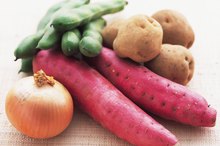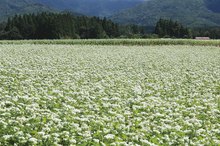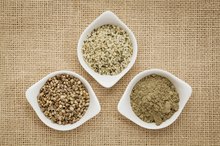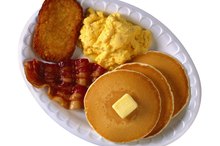What does fact checked mean?
At Healthfully, we strive to deliver objective content that is accurate and up-to-date. Our team periodically reviews articles in order to ensure content quality. The sources cited below consist of evidence from peer-reviewed journals, prominent medical organizations, academic associations, and government data.
The information contained on this site is for informational purposes only, and should not be used as a substitute for the advice of a professional health care provider. Please check with the appropriate physician regarding health questions and concerns. Although we strive to deliver accurate and up-to-date information, no guarantee to that effect is made.
Does Corn on the Cob Provide All of the Essential Amino Acids?
Amino acids are the building blocks of protein. Twenty amino acids exist, nine of which your body cannot produce on its own. These are known as the essential amino acids , and they are histidine, isoleucine, leucine, lycine, methionine, phenylalanine, threonine, tryptophan and valine.
When a protein contains these essential amino acids in nearly equal amounts, it's considered a "complete" protein. Complete proteins are usually animal products, including poultry, meat, dairy and eggs. A few vegetable-based foods are also "complete" and contain all of the essential amino acids. These include soy and quinoa.
Corn does have all of the essential amino acids but is considered a "low-quality" protein or, using an older moniker, an "incomplete" protein. Low-quality protein foods may be lacking or have very low quantities of the nine essential amino acids and, therefore, should be combined with other foods to provide adequate amounts of all essential amino acids.
Amino Acid Profile of Corn
The primary amino acid that corn is missing is lysine. Modern day corn on the cob has just 1.9 to 2.7 percent lysine, which is well below the level that would make corn a "complete" protein. Lysine is often called a "limiting amino acid" because it's hard to obtain in plant-based foods. It plays an important role in building up and repairing muscle fibers and promoting the production of neurotransmitters in the brain.
Corn is also low in the amino acid of tryptophan 2. Another essential amino acid, tryptophan regulates mood and hormone levels.
- The primary amino acid that corn is missing is lysine.
- Modern day corn on the cob has just 1.9 to 2.7 percent lysine, which is well below the level that would make corn a "complete" protein.
High-Quality Protein Combinations
Essential Amino Acids in Vegetables
Learn More
If you want to use corn as part of a quality protein meal, combine it with other foods throughout the day that do contain the missing essential nutrients. While you don't have to eat these amino acids at the exact same time to get all the amino acids your need for good health, food combining at meals does help ensure you get what you need.
Beans, or legumes, are the perfect complement for corn on the cob. Legumes are a relatively rich source of lysine and tryptophan, but are low in the sulfer amino acids of methionine and cystine of which corn has plenty. Combining black beans, cowpeas or white beans in a stew serve alongside corn on the cob creates a more complete protein with all the ratios of essential amino acids.
Other combinations, such as nut butter on whole-wheat bread or rice and beans are other vegetarian combinations that provide all of the essential amino acids.
- If you want to use corn as part of a quality protein meal, combine it with other foods throughout the day that do contain the missing essential nutrients.
- Combining black beans, cowpeas or white beans in a stew serve alongside corn on the cob creates a more complete protein with all the ratios of essential amino acids.
Related Articles
References
- USDA National Nutrient Database: Corn
- Molecular Genetic Approaches to Maize Improvement: Enhancement of Amino Acid Availability in Corn Grain
- FAO: Maize in Human Nutrition
- Hoffman JR, Falvo MJ. Protein - which is best?. J Sports Sci Med. 2004;3(3):118-30.
- Tessari P, Lante A, Mosca G. Essential amino acids: Master regulators of nutrition and environmental footprint?. Sci Rep. 2016;6:26074. doi:10.1038/srep26074
- Marsh KA, Munn EA, Baines SK. Protein and vegetarian diets. Med J Aust. 2013;199(4 Suppl):S7-S10.
- Gropper SS, Smith JL, Groff JL. Advanced Nutrition and Human Metabolism. Sixth Edition. Wadsworth Publishing Company, 2013.
- Smolin LA, Grosvenor, MB. Nutrition: Science and Applications. Third Edition. Wiley Publishing Company, 2013.
Writer Bio
Andrea Boldt has been in the fitness industry for more than 20 years. A personal trainer, run coach, group fitness instructor and master yoga teacher, she also holds certifications in holistic and fitness nutrition.









